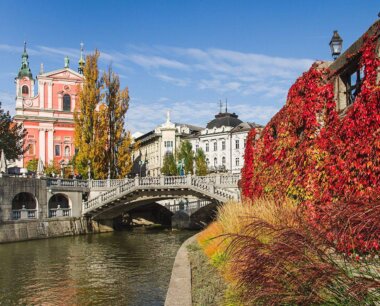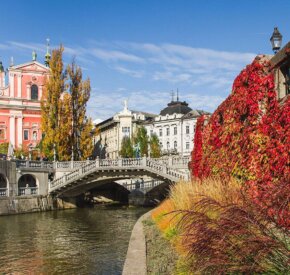
Uzbekistan’s seven most incredible natural wonders
Home to soothing lakes, gushing rivers, inspiring national parks and immaculate nature reserves, here’s how to experience Uzbekistan’s bountiful natural wonders…
Uzbekistan draws in visitors with its dazzling array of monuments, UNESCO-listed mosques, mausoleums, and palaces which epitomise the glory and romance of the Silk Road. But what tourists discover on arrival is that the country’s natural wonders are equally rich: waterfalls cascade into lakes, snow caps towering mountain ranges, and desert sands blow from dunes to the shores of Aidarkul and the Aral Sea. Those who travel beyond the cities are rewarded by nature’s treasures, witnessing a very different side of Uzbekistan and the thrill that only comes from unexpected adventures. These are the top places to go…
1. Ugam-Chatkal Natural National Park

Ugam-Chatkal lies within the boundaries of the Western Tien Shan, a dramatic mountain range and UNESCO World Heritage Site. Northeast of Tashkent and easily accessible from the capital, the park’s combination of turquoise lakes, powerful waterfalls, caves and other curious rock formations makes it a popular hiking spot. There are plenty of scenic locations for wild swimming and fishing, mushroom picking (for which you’ll need a knowledgeable local guide), and picnicking. In recent years, adrenaline junkies have pioneered white water rafting routes on the Chatkal River, including through rapids in steep-sided canyons. In the winter months, there are routes across Ugam-Chatkal for backcountry skiing.
2. Tugai Forests in the Amu Darya delta

Tugai is a type of riparian woodland found in river deltas. The Amu Darya – known in antiquity as the Oxus – is Central Asia’s largest river and flows through Uzbekistan en route to the Aral Sea. The forest in its floodplains is a haven for wildlife, but due to climate change the desert is advancing, posing an existential threat.
The Lower Amudarya State Biosphere Reserve, situated just south of Nukus in Karakalpakstan, protects the vital tugai ecosystem. It is a biodiversity hotspot with more than 400 species of plants and large numbers of birds, many of which stop here seasonally on their intercontinental migration path. The reserve’s conservationists run a successful captive breeding programme for Bactrian deer, many of which have been released into the forest.
3. Kitab Nature Reserve

Kitab Nature Reserve in Kashkadarya Region is unique, not because of its flora and fauna (though they’re significant, too), but because of its geology and palaeontology. This spur of the Zarafshan Mountains is a future candidate for UNESCO Global Geopark status, but until it gains that accolade it will stay under the radar and therefore wonderfully quiet.
The best way to explore the reserve is on foot, following one of the many hiking trails and stopping periodically to make use of the viewing platforms. 470 million years ago, the cliffs around you were under the sea: look closely and you’ll see coral and the remains of other marine life forms in the rock. Check out the small geology museum whilst you’re here.
4. Kyzylkum Desert

Much of Uzbekistan is covered by deserts, the largest of which is the Kyzylkum. Kyzylkum means “Red Desert” and refers to the reddish-brown colour of its sand. Whether you look from the window of the Afrosiyob train on the way to Samarkand, or travel by car from Bukhara to Khiva, this desert is an omnipresent friend.
The Kyzlkum has always shaped the history of Uzbekistan, as settlements could only be built in oases and along the riverbanks. This is why when you visit a site such as the Rabati Malik caravanserai in Navoi Region, you’ll see it is accompanied by a sardoba, a domed reservoir. Caravans had to follow set routes through this desert to guarantee they could find water.
5. Tuyabuguz Reservoir

Uzbekistan may be doubly landlocked – there are two or more countries in every direction between Uzbekistan and the ocean – but that doesn’t mean you can’t go to the beach! Locals affectionately call Tuyabuguz Reservoir “The Tashkent Sea” and make good use of the water and pebbly shore.
Tuyabuguz is close enough to the capital for a day trip, and as the water temperature reaches 25 Celsius in summer, it is a glorious place to go swimming. If fishing is your thing, you can catch shrimp, carp, and catfish, but you’ll be in competition with the birds. Some 60 bird species have been recorded at Tuyabuguz, including a large breeding colony of white storks and plenty of Pallas’ gulls. Binoculars are highly recommended.
6. Nuratau Mountains

If you are overwhelmed by the monuments of Samarkand and Bukhara, the nearby Nuratau Mountains are an easy and welcome escape. This is one of the best ecotourism destinations in Uzbekistan, with multiple village homestays, English speaking hiking guides, and a cooler, more comfortable climate.
Use the tourism villages of Sentob or Hayat as your base, and plan several days of hiking through orchards, beside streams, and along shepherds’ trails. It is possible to see Severtsov wild sheep with their distinctive horns, as well as red foxes, wild boars, and steppe polecats. Biodiversity here has always been rich, as attested to by the thousands of ancient petroglyphs, many of which depict hunting scenes, in the Sarmysh-say Gorge.
7. Aidarkul (Aydar Lake)

Aidarkul is a manmade lake stretching 250 km across Navoi and Jizzakh Regions. It was created in the 1960s and ‘70s when the Syr Darya was dammed. This huge brackish lake and its islands are a paradise for water birds, including migratory species, but Aidarkul is also an increasingly popular spot for people to relax and cool off in the summer heat. You can swim safely in the water, and several small resorts are under construction along the shore, ensuring there’s an adequate supply of parasols, sun loungers, snacks, and cold drinks. There are yurt camps near Aidarkul, too, opening up the enticing possibility of swimming and birdwatching in the day, followed by an evening sat around the bonfire and a night sleeping under the stars.
Feeling inspired?
Immerse yourself in Uzbekistan’s natural wonders.





















